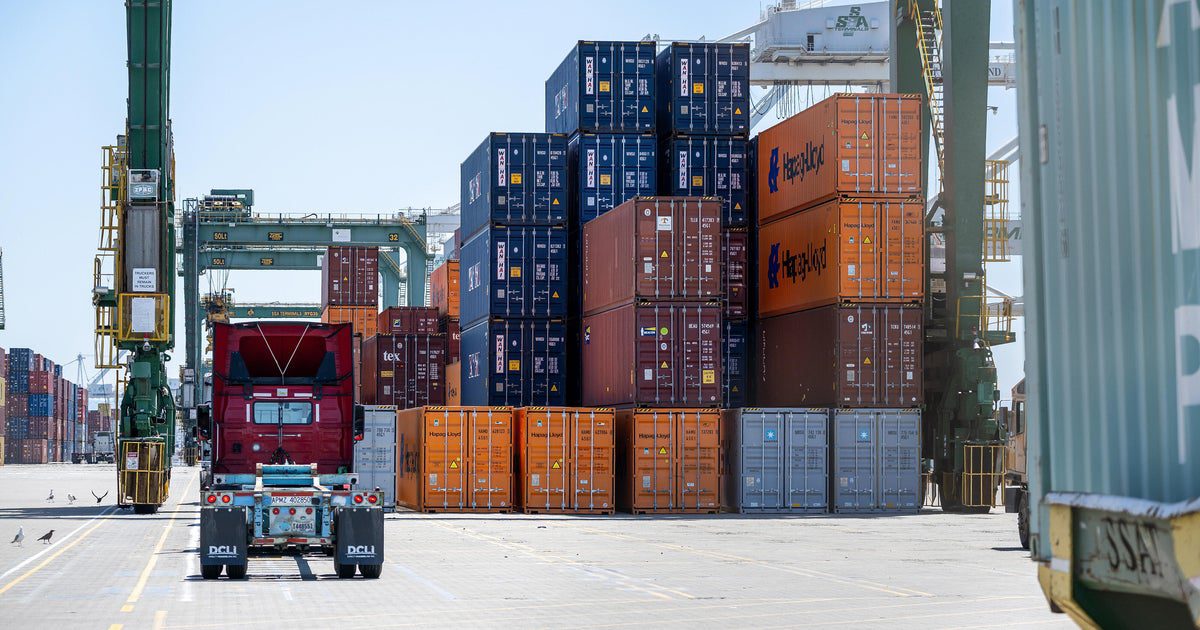Washington — President Trump officially began levying higher import taxes on dozens of countries Thursday, just as the economic fallout of his months-long tariffs threats was beginning to create visible damage to the U.S. economy.
The White House said that starting just after midnight EDT, goods from more than 60 countries and the European Union began facing tariff rates of 10% or higher. Products from the European Union, Japan and South Korea are being taxed at 15%, while imports from Taiwan, Vietnam and Bangladesh are being taxed at 20%. Mr. Trump also expects places such as the EU, Japan and South Korea to invest hundreds of billions of dollars in the U.S.
He immediately took to his Truth Social platform to hail the levies, saying, “IT’S MIDNIGHT!!! BILLIONS OF DOLLARS IN TARIFFS ARE NOW FLOWING INTO THE UNITED STATES OF AMERICA!”
About an hour before that, he posted, “RECIPROCAL TARIFFS TAKE EFFECT AT MIDNIGHT TONIGHT! BILLIONS OF DOLLARS, LARGELY FROM COUNTRIES THAT HAVE TAKEN ADVANTAGE OF THE UNITED STATES FOR MANY YEARS, LAUGHING ALL THE WAY, WILL START FLOWING INTO THE USA. THE ONLY THING THAT CAN STOP AMERICA’S GREATNESS WOULD BE A RADICAL LEFT COURT THAT WANTS TO SEE OUR COUNTRY FAIL!”
“I think the growth is going to be unprecedented,” Trump said Wednesday afternoon. He added that the U.S. was “taking in hundreds of billions of dollars in tariffs,” but he couldn’t provide a specific figure for revenues because “we don’t even know what the final number is” regarding tariff rates.
Despite the uncertainty, the Trump White House is confident that the onset of his broad tariffs will provide clarity about the path of the world’s largest economy. Now that companies understand the direction the U.S. is headed, the administration believes they can ramp up new investments and jump-start hiring in ways that can rebalance the U.S. economy as a manufacturing power.
But so far, there are signs of self-inflicted wounds to America as companies and consumers alike brace for the impact of new taxes. What the data has shown is a U.S. economy that changed in April with Trump’s initial rollout of tariffs, an event that led to market drama, a negotiating period and Trump’s ultimate decision to start his universal tariffs on Thursday.
After April, economic reports show that hiring began to stall, inflationary pressures crept upward and home values in key markets started to decline, said John Silvia, CEO of Dynamic Economic Strategy.
“A less productive economy requires fewer workers,” Silvia said in an analysis note. “But there is more, the higher tariff prices lower workers’ real wages. The economy has become less productive, and firms cannot pay the same real wages as before. Actions have consequences.”
Even then,…
Disclaimer
We strive to uphold the highest ethical standards in all of our reporting and coverage. We 5guruayurveda.com want to be transparent with our readers about any potential conflicts of interest that may arise in our work. It’s possible that some of the investors we feature may have connections to other businesses, including competitors or companies we write about. However, we want to assure our readers that this will not have any impact on the integrity or impartiality of our reporting. We are committed to delivering accurate, unbiased news and information to our audience, and we will continue to uphold our ethics and principles in all of our work. Thank you for your trust and support.
Website Upgradation is going on. For any glitch kindly connect at 5guruayurveda.com


